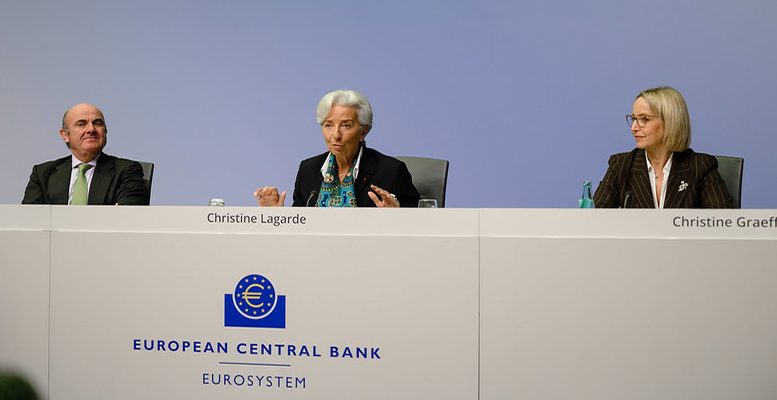The European Central Bank’s valuation of economic expectations has changed little since September. The new harmonized inflation forecast (HICP) of 1.6% by 2022 indicates that there is little desire to question the current accommodative configuration of monetary policy. The focus was, instead, on the appearance of Lagarde after its first monetary policy meeting and market watchers said she managed it well.
“With an inflation forecast of only 1.7% for the 4Q of 2022, Lagarde has admitted today that the ECB has failed in its mandate. The strategic review is an opportunity to assess what else the ECB can do. It remains ahead hard work to get the consensus of all the bankers represented on the Governing Council of the Central Bank,” Ron Temple, from Lazard AM, commented.
At Pimco, analysts believe that “There were no winks of consideration to the ‘hawks’ or the ‘pigeons’ in their deliberations and she herself defined herself as “owl” in terms of monetary policy, while stressing that monetary policy continued as usual, in business as mode usual. Lagarde prepared to make it clear that he has his own styles and points of view and urged the markets not to overinterpret every word he utters at this beginning of his career at the head of the ECB.
“The poor reaction of the markets during and after the press conference shows a successful debut as president of the ECB. While we believe that it is premature to draw firm conclusions about its vision of monetary policy and the communication approach that it will adopt, the first indications suggest that its objective is to represent the center of the Governing Council and adopt a broader leadership style, driven by consensus, opening the space for debates and agreements without frontal confrontations in monetary policy meetings ”, they explained after Lagarde’s speech.
Aberdeen Standard Investments’ Paul Diggle noted that Ms. “Lagarde presented a slightly more optimistic view of the economic outlook, noting signs of “some stabilization of the economic slowdown”, “a slight increase in inflation” and “less pronounced downward risks”. We share her opinion that, despite the continuing contraction of industrial production in the euro area, there are early signs that the sharp slowdown in the manufacturing sector is beginning to come to an end.





